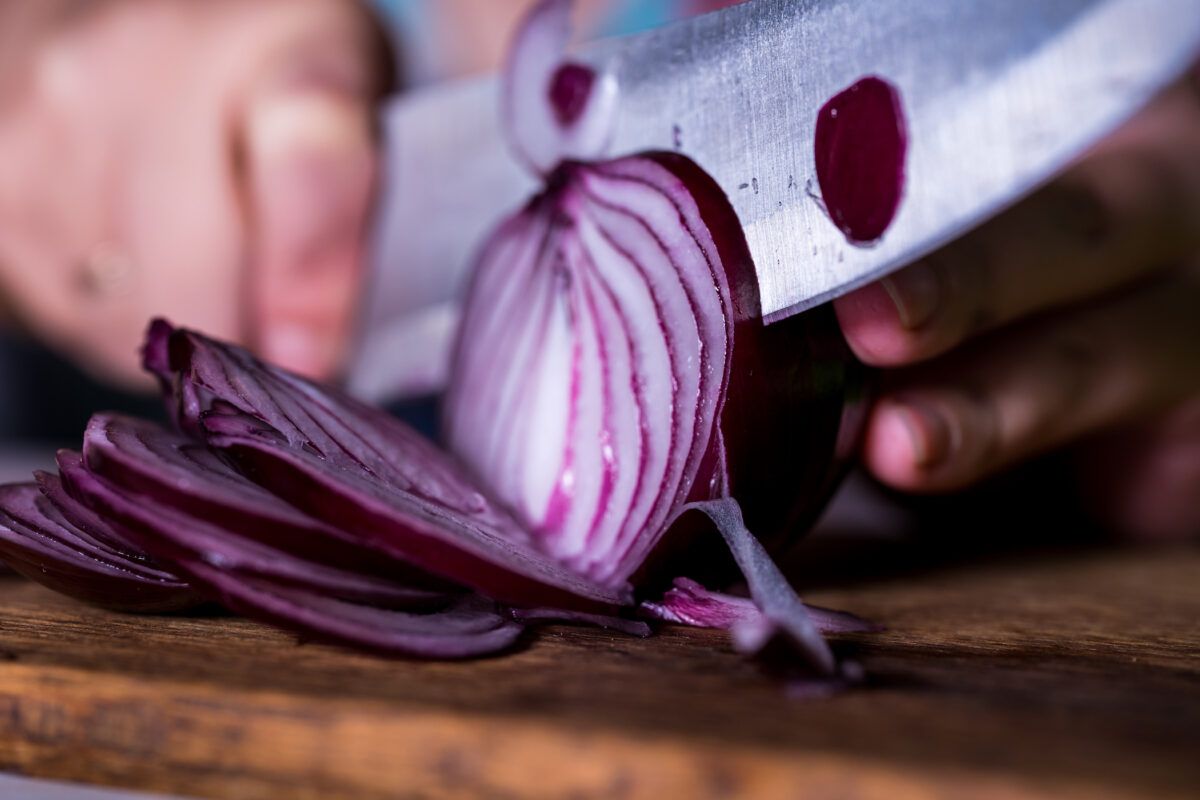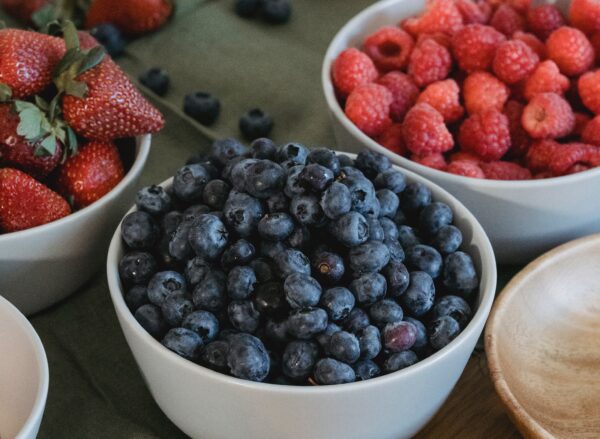Fights COVID Like Hydroxychloroquine, yet Easier to Find

The Epoch Times - BY Joseph Mercola - December 27, 2021
The Substack Modern Discontent recently posted an anthology series on the benefits of quercetin, including the finding that it works like hydroxychloroquine, a drug found to be effective against SARS-CoV-2 when used early enough.
Part 1 begins with a brief overview of what quercetin is and its basic mechanisms of action. Quercetin is a flavonoid found in a variety of fruits and vegetables, such as onions and shallots, apples, broccoli, asparagus, green peppers, tomatoes, red leaf lettuce, strawberries, raspberries, blueberries, cranberries, black currants and green tea.
The quercetin content in any given food is largely dependent on light exposure, though, so depending on the country you’re in, different foods will top the list of most quercetin-rich.
Quercetin Against SARS-CoV-2
In Part 2 of the anthology, Modern Discontent reviews the evidence behind the recommendation to use quercetin against COVID-19 specifically. As mentioned, zinc has antiviral activity, and quercetin helps shuttle the zinc into the cell. But quercetin also has other mechanisms of action that make it useful in the fight against COVID-19.

Quercetin modulates NLRP3 inflammasome, an immune system component involved in the uncontrolled release of proinflammatory cytokines that occurs during a cytokine storm.
For example, quercetin has been shown to:
- Inhibit SARS-CoV-2 spike protein to ACE2 receptor docking. Computational modeling studies have shown quercetin can bind to the ACE2 receptor and the spike protein interface, thereby inhibiting the two from binding together. By preventing viral attachment, it helps prevent viral entry into the cell. Commenting on one of these studies, Modern Discontent notes:
“Although [a] computer modeled study, the evidence here suggests that quercetin’s binding activity to ACE2 is comparable to other standard of care drugs used to treat SARS-CoV-2 (eg. Remdesivir, Lopinavir, Ritonavir).”
- Inhibit lipopolysaccharide (LPS)-induced tumor necrosis factor α (TNF-α) production in macrophages. (TNF-α is a cytokine involved in systemic inflammation, secreted by activated macrophages, a type of immune cell that digests foreign substances, microbes and other harmful or damaged components.)
- Inhibit the release of proinflammatory cytokines and histamine by modulating calcium influx into the cell.
- Stabilize mast cells and regulate the basic functional properties of immune cells, thereby allowing it to inhibit “a huge panoply of molecular targets in the micromolar concentration range, either by down-regulating or suppressing many inflammatory pathways and functions.”
- Act as a zinc ionophore, i.e., a compound that shuttles zinc into your cells. This is one of the mechanisms that can account for the effectiveness seen with hydroxychloroquine, which is also a zinc ionophore.
- Boost interferon response to viruses, including SARS-CoV-2, by inhibiting the expression of casein kinase II (CK2) — CK2 is an enzyme that is fundamental to controlling homeostasis at the cellular level. There is evidence that it down-regulates the ability a cell has to generate Type 1 interferon when attacked by a virus. However, the interferon does not function by attacking the virus. Instead, it tells the infected cell and the cells that surround the infected cell to make proteins that stop viral replication. In a nutshell, quercetin stops CK2 from interfering with the action of Type 1 interferon so cells receive the signal to stop viral replication.
- Modulate NLRP3 inflammasome, an immune system component involved in the uncontrolled release of proinflammatory cytokines that occurs during a cytokine storm.
- Exert a direct antiviral activity against SARS-CoV — Quercetin’s general antiviral capacity has been attributed to three primary mechanisms of action:
- Binding to the spike protein, thereby inhibiting its ability to infect host cells
- Inhibiting replication of already infected cells
- Reducing infected cells’ resistance to treatment with antiviral medication
- Inhibit the SARS-CoV-2 main protease.
Quercetin in COVID-19 Medical Literature
In Part 3, Modern Discontent reviews some of the clinical trials that have taken place. One COVID-19-specific study found that people who took zinc and two zinc ionophores — quinine drops and quercetin — had lower incidence of COVID-19 than the control group. Over the course of the study (20 weeks), only two of the 53 test subjects became symptomatic, compared to 12 of the 60 controls. As noted by Modern Discontent:
“Although this didn’t test quercetin in isolation, the study does suggest that over-the-counter, easily accessible compounds may be extremely beneficial in fighting against COVID, especially when taken as a prophylactic.”
In another trial, 76 outpatients who tested positive but had only mild symptoms were given 1,000 mg of Quercetin Phytosome® (quercetin in sunflower phospholipids that increase oral absorption 20-fold) per day for 30 days, in addition to standard care (analgesics, oral steroids and antibiotics). Another 76 patients were given standard of care only.
In the quercetin group, only 9.2% of participants went on to require hospitalization, compared to 28.9% of patients who received standard of care only. According to the authors:
“The results revealed a reduction in frequency and length of hospitalization, in need of non-invasive oxygen therapy, in progression to intensive care units and in number of deaths.
The results also confirmed the very high safety profile of quercetin and suggested possible anti-fatigue and pro-appetite properties. QP [Quercetin Phytosome®] is a safe agent and in combination with standard care, when used in early stage of viral infection, could aid in improving the early symptoms and help in preventing the severity of COVID-19 disease.”
Quercetin was also featured in two scientific reviews published in 2020. The first, published in in the Integrative Medicine journal in May 2020,32 highlighted quercetin’s promotion of SIRT2, which inhibits NLRP3 inflammasome.
The second review article, published in the June 19, 2020, issue of Frontiers in Immunology, highlighted quercetin’s usefulness as a COVID-19 treatment when used in conjunction with vitamin C. The vitamin C recycles oxidized quercetin, producing a synergistic effect. It also enhances quercetin’s antiviral capacity.
Food as Medicine
With the advent of processed foods, many important nutrients have been lost or minimized in the average person’s diet. Quercetin, being found in fresh fruits, vegetables and berries is one of them. Unfortunately, while essential vitamins and minerals are generally recognized for their importance, antioxidants such as quercetin are often overlooked, and sometimes labeled as “pseudoscience” or “fad” supplements. As noted by Modern Discontent:
“The great number of benefits that these compounds contribute to humans cannot be overstated … An argument can be made that not only could quercetin prove beneficial to our health, but an absence of it may prove detrimental in the long term.”
If COVID-19 has taught us anything, it’s the importance of basic health and a healthy immune function. In this regard, a diet high in fresh fruits and vegetables can go a long way. Nutritional supplements also have their place, especially in situations like a pandemic.
Summary
In conclusion, Modern Discontent provides the following summary of findings:
• “There’s evidence that quercetin may work similarly to hydroxychloroquine — It seems that quercetin may operate as both an immunomodulator and a zinc ionophore. Its use as an over-the-counter anti-allergic supplement as well as its use for asthma indicates an ability to affect the production of histamine and cytokines …
• Quercetin has plenty of other benefits — … Antioxidants … are some of the most well studied compounds, with possible anti-cancer, pro-heart and pro-organ benefits. Add on possible antimicrobial properties and it becomes hard to argue that this is nothing more than a possible fad supplement.
• Although limited, there is some evidence that quercetin may be effective against SARS-CoV2 — Computer models and in vitro studies suggest that ACE2 receptors and the main protease of SARS-CoV2 may be good target candidates for quercetin … the limited number of studies suggest quercetin may be effective, especially if used early on or as a prophylactic.
• Dietary quercetin is the main source of quercetin, and its deficiency in modern diets may be contributing to our health problems — Quercetin is primarily sourced from colorful fruits, vegetables, teas … all foods that many of our ancestors would have consumed on a regular basis … Modern ‘enriched’ foods tend to supplement with additional vitamins and minerals, but may miss out on other plant-derived compounds that have played a substantial role in our diet.
Similar to reduced sunlight exposure and the need for increased vitamin D supplementation, we may need to look at possible supplementation of overlooked compounds such as polyphenols. Sourcing these compounds from real foods would prove the most beneficial, but in groups of people who may not have access to fresh fruits and vegetables, quercetin and polyphenol supplementation may be useful.
This would include people with alternative diets such as keto, who may avoid high carb fruits, and thus may be missing a key nutrient in their diets.
Quercetin has plenty of benefits, and for those who may be missing out on it in their diet they may want to look into sourcing it with supplementation. Don’t take this as a prescription or recommendation, but an argument to examine your own health and see what you may be lacking …”
Sources and References
- Modern Discontent Quercetin Anthology Series
- Modern Discontent Quercetin Anthology Series Part 1
- Modern Discontent Quercetin Anthology Series Part 2
- Repurposing Therapeutics for COVID-19: Supercomputer-Based Docking to the SARS-CoV-2 Viral Spike Protein and Viral Spike Protein-Human ACE2 Interface
- J. Agric Food Chem 2020 Nov 25; 68(47): 13982–13989
- Drug Dev Ind Pharm 2020; 46(8): 1345–1353
- Nutrients 2016 Mar; 8(3): 167, 5.1.2 Mechanism of Action
- Nutrients 2016 Mar; 8(3): 167, Table 1: Mast cell
- Journal of Agricultural and Food Chemistry 2014, 62, 32, 8085-8093
- Medical Hypothesis, 2020;142(109800)
- Frontiers in Immunology, 2019; doi.org/10.3389/fimmu.2019.01586
- Journal of Biological Chemistry, 2007; doi.org/10.1074/jbc.R700004200
- Britannica
- Mediators of Inflammation 2016; 2016, Article ID 5460302
- Journal of Virology October 2004: 11334-11339 (PDF)
- Biotechnology Letters February 15, 2012; 34: 831-838
- Bioorg Med Chem 2010 Nov 15;18(22):7940-7
- Journal of Virology 2004 Oct;78(20):11334-9
- Preprints.org March 12, 2020
- FLCCC I-MASK+ Protocol (PDF)
- Modern Discontent Quercetin Anthology Series Part 3
- J Evid Based Integr Med 2021; 26: 2515690X211026193
- Int J Gen Med 2021; 14: 2359–2366
- MedPage Today July 1, 2020
- Integrative Medicine May 9, 2020; 19(S1)
- Frontiers in Immunology June 19, 2020 DOI: 10.3389/firmmu.2020.01451

Dr. Joseph Mercola is the founder of Mercola.com. An osteopathic physician, best-selling author, and recipient of multiple awards in the field of natural health, his primary vision is to change the modern health paradigm by providing people with a valuable resource to help them take control of their health. This article was originally published on Mercola.com
COPYRIGHTS
Copy & Paste the link above for Yandex translation to Norwegian.
WHO and WHAT is behind it all ? : >
The bottom line is for the people to regain their original, moral principles, which have intentionally been watered out over the past generations by our press, TV, and other media owned by the Illuminati/Bilderberger Group, corrupting our morals by making misbehavior acceptable to our society. Only in this way shall we conquer this oncoming wave of evil.
Commentary:
Administrator
HUMAN SYNTHESIS
All articles contained in Human-Synthesis are freely available and collected from the Internet. The interpretation of the contents is left to the readers and do not necessarily represent the views of the Administrator. Disclaimer: The contents of this article are of sole responsibility of the author(s). Human-Synthesis will not be responsible for any inaccurate or incorrect statement in this article. Human-Synthesis grants permission to cross-post original Human-Synthesis articles on community internet sites as long as the text & title are not modified